Today we are going to take a quick look at the Netgear GS305P 5-Port Gigabit PoE switch. Since summer is a slower time, and STH is in the middle of a studio move, we are doing a little PoE switch series. We have already taken a quick look at the Netgear GS108PP 8-Port PoE+ switch and also the TP-Link 5-Port Gigabit PoE Switch Review TL-SG1005P so it seemed like we should look at this unit as well.
Things Got Wierd Quickly
We purchased the Netgear GS305P about three weeks ago via Amazon. This was listed as a 55W PoE version. Now, Amazon has a GS305P that is a 4x PoE+ 63W switch.
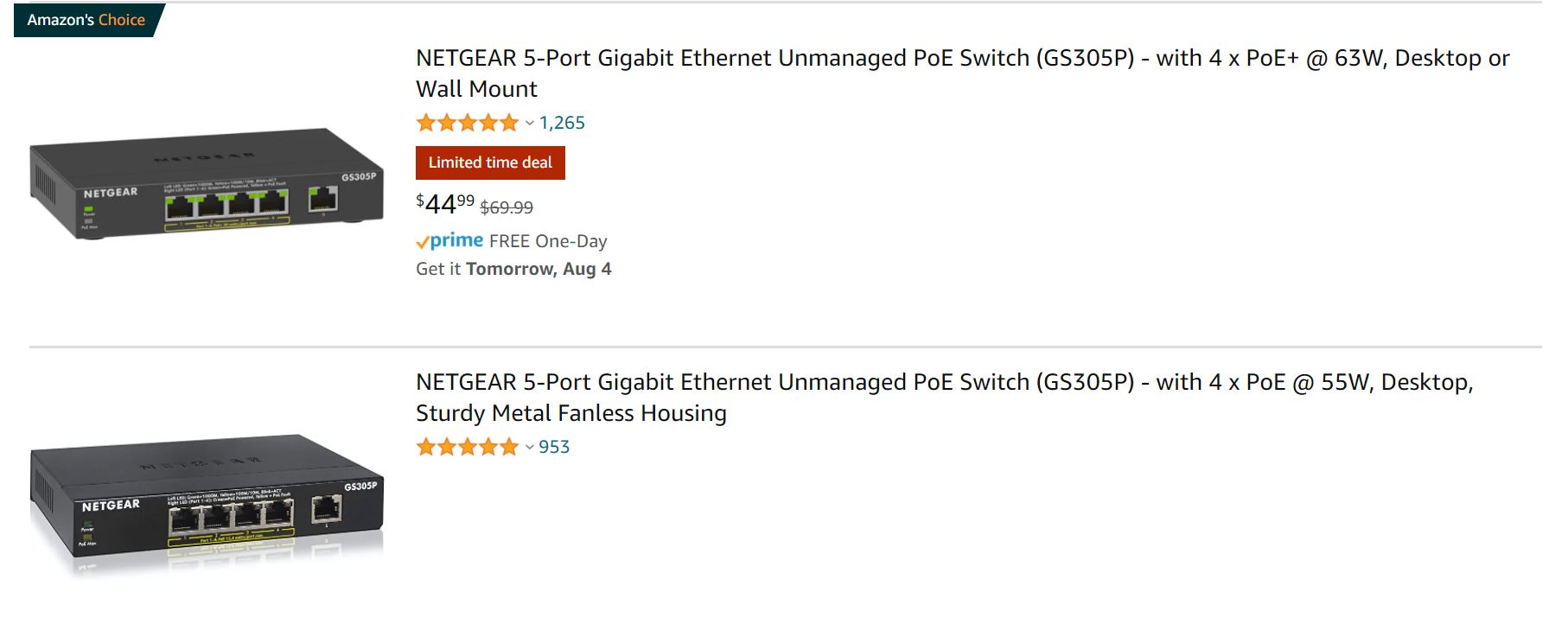
We ordered the new one, and that should be here soon. This is where things get very confusing. When we click on the new $44.99 option, we get an image of this GS305P. One can see the text under the switch is “PoE+ 30 watts/port max”.
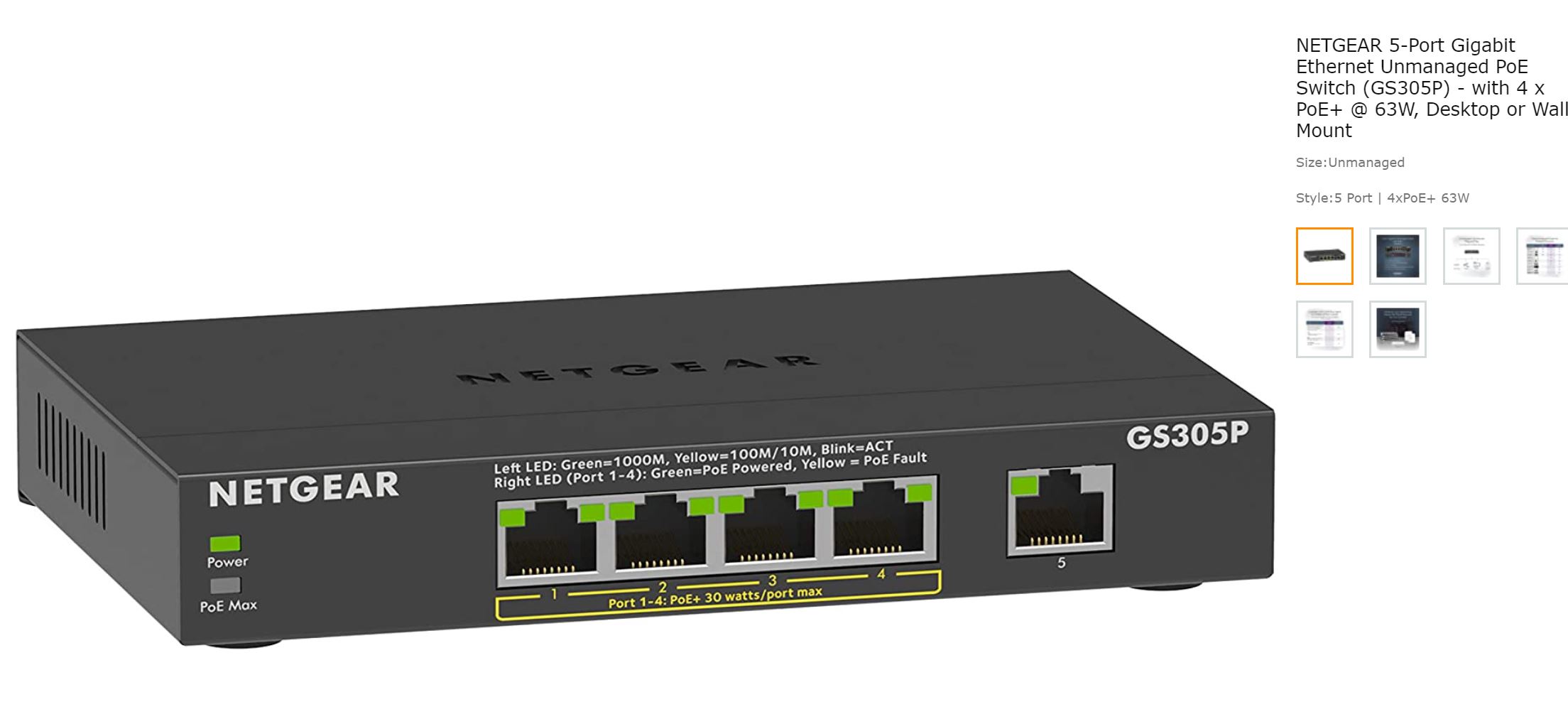
When we click the next picture over, however, we see again that this is a PoE+ switch, except the switch faceplate here says it is a “PoE 15.4 watts/port max” switch.
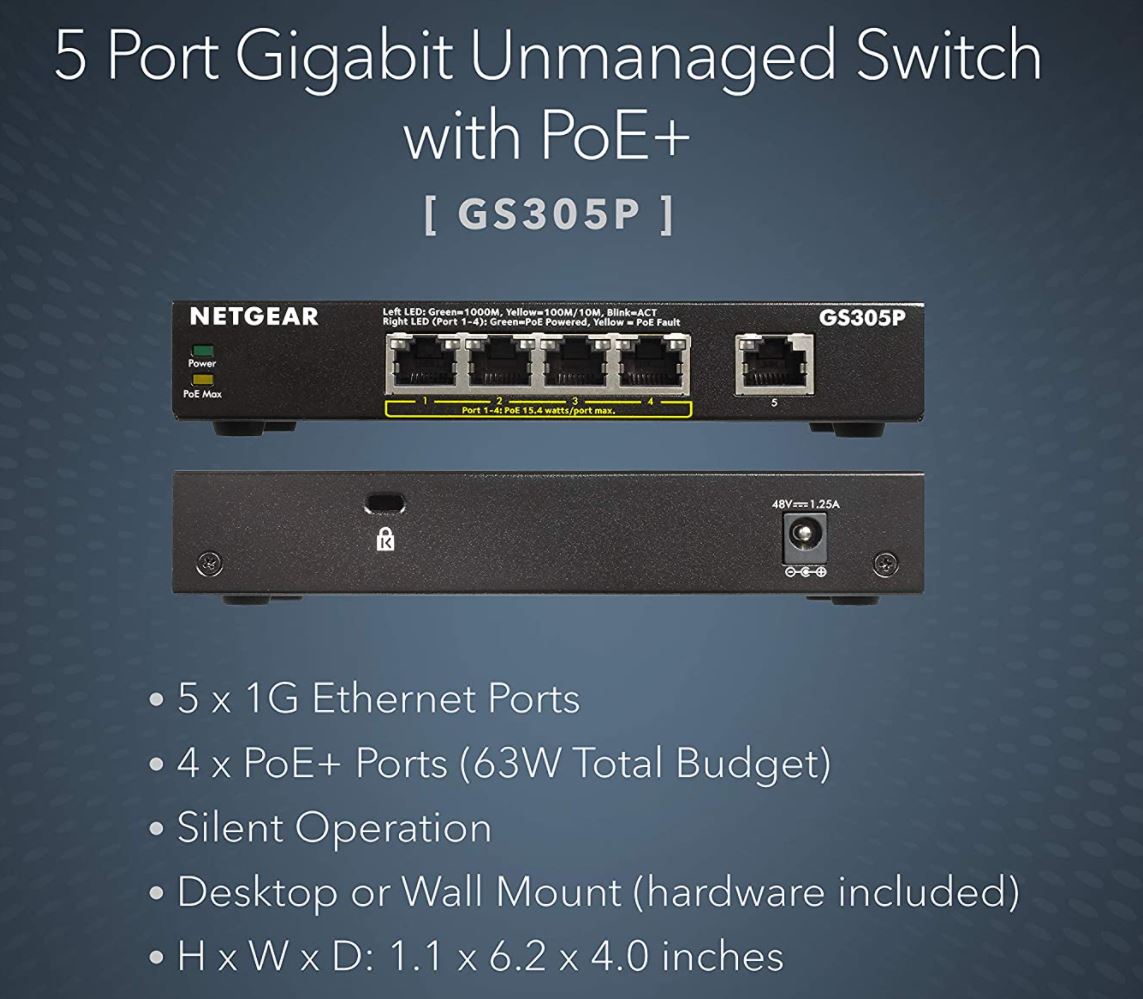
This is the same model number (GS305P) used in both but it appears as though they are different switches. Just to be clear, we have the 55W PoE model, not the 63W PoE+ version of the GS305P. If you find that confusing, you should and we urge Netgear not to change products without changing model numbers on the front of their products so it is easy to tell the difference. Netgear seems to have even slipped up with the above picture using the GS305Pv2 specs with the GS305Pv1 picture. Our unit did not have a “v1” marking even being purchased mid-July 2021. PoE v. PoE+ is a major specification change that requires a model change to not confuse consumers. We only found this in our final editing review as an example.
We asked Netgear and found out that this is the transition from V1 to V2 since it was not easy to find as of when this article was written. Still, major retailers such as Amazon do not have an easy way to tell the difference between the two and it seems as though some specs are still mixed. We are going to call this the GS305P 55W but it is also the V1 even though it is not marked V1 anywhere that we could see on the unit.
Netgear GS305P 55W Hardware Overview
This is a very simple switch. There are five RJ45 1GbE ports on front. What is really interesting here is that this is not actually a “5-port PoE switch” as much as it is a “5-port switch that has PoE”. Most of the marketing makes it clear that only four of the ports are PoE capable.
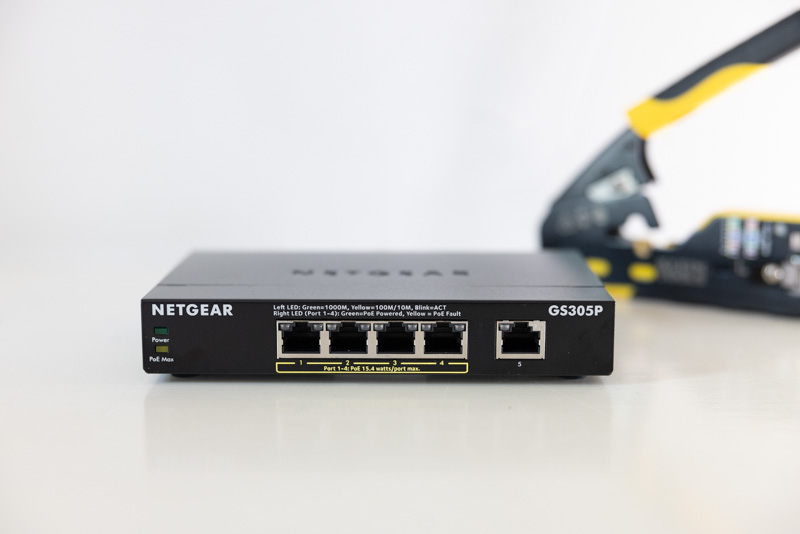
The PoE (802.3af) ports provide a maximum of 15.4W per port, not closer to double that we see with PoE+. If you want to learn more about the key differences of PoE vs PoE+ vs PoE++ switches we have a STH guide. We get an external 60W power supply for the unit which allows us to get the 55W available across the four ports. Most devices do not use 100% of a PoE power budget so some oversubscription is common in the industry.
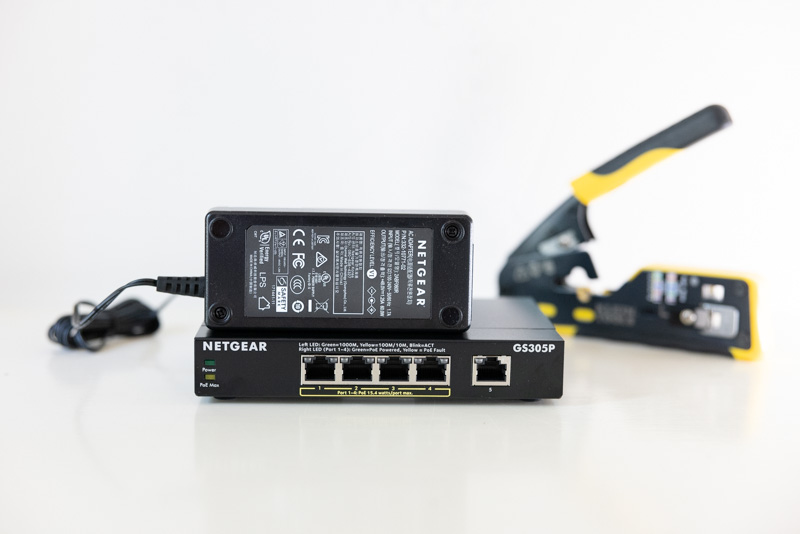
Interestingly here, the TP-Link TL-SG1005P had the same PoE port count, but had a 70W PSU instead of the 60W unit on the Netgear.
The rear of the unit is fairly simple except for a lock port and a power input port. The power input is 48V 1.25A.
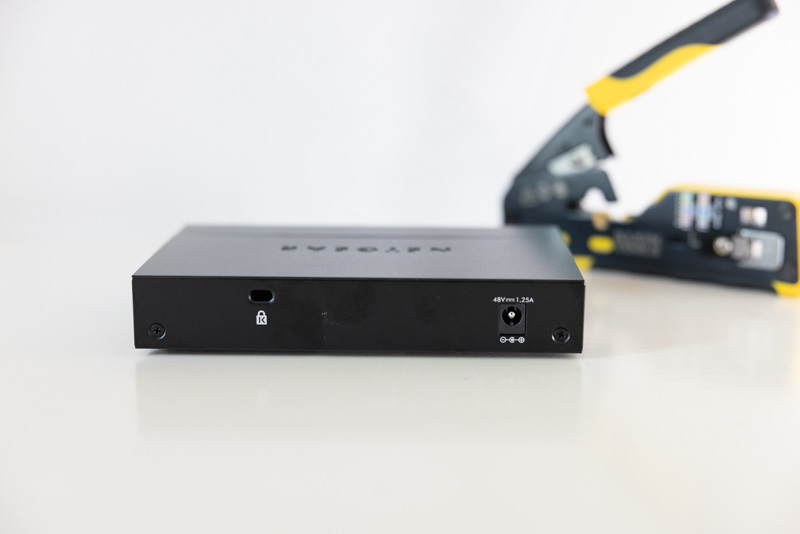
Inside the switch, we see a relatively simple PCB. Unlike the TP-Link unit, we do not have a heatsink on the switch chip. This, along with not putting PoE circuits on the fifth port shows just how much the switch is cost-optimized in order to deliver a metal case at this price point.
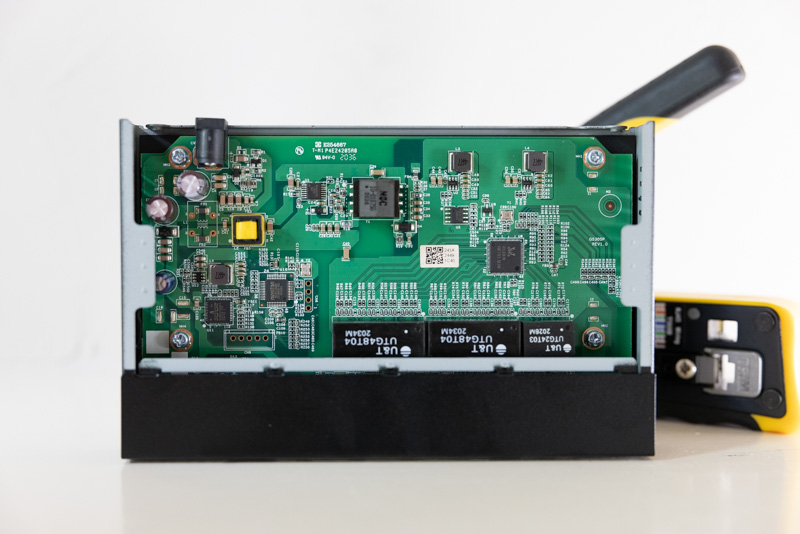
The switch chip is the Realtek RTL8367N that we can see here.
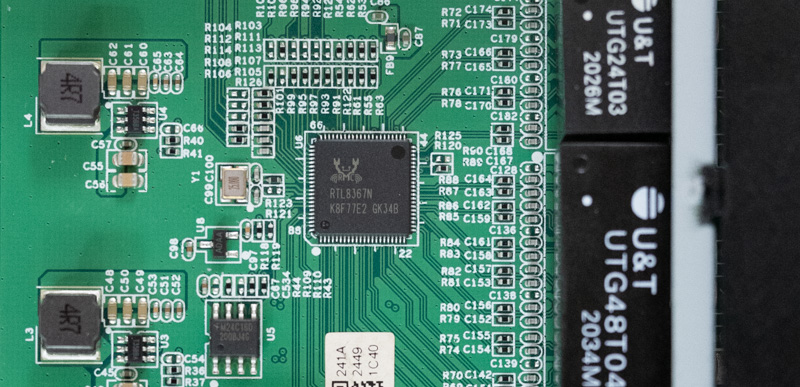
That switch chip is closer to $5 than $10 but that is a major cost in such a low-end switch. To some of our readers, the RTL8367N may seem familiar as it is used in the Ubiquiti N-SW NanoSwitch as well.
Next, we are going to take a look at performance, power consumption, and noise.

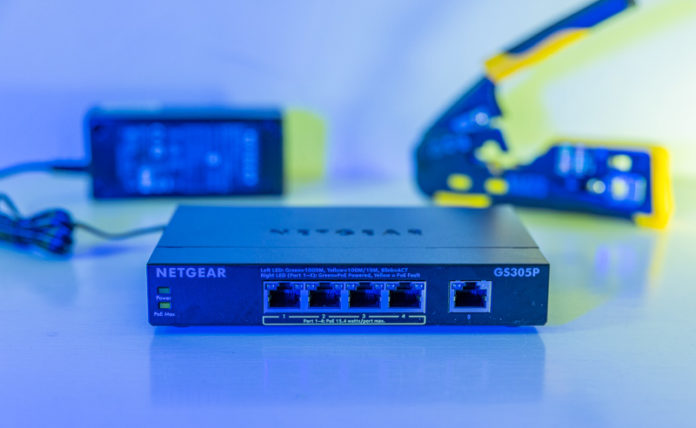



A further factor is Amazon itself. There are lots of sellers offering both Vs of this product, and although AMZN appears to have separate ASINs for V1 & V2, it is reported that AMZN co-mingles stock from all sellers at the same warehouse location. I’d love to be mistaken about that.
So even if you insist on shipped-by-AMZN, you are relying on the stockers having double-checked that what the sellers shipped-in is V1 or V2 for the specific ASIN. And even if you buy from AMZN as seller, it might be some other seller’s stock. If AMZN is lax about getting frank counterfeits out of their store, it makes you wonder about the stewardship discipline for minor product revision currency.
I was like “who cares about amazon” but then for a $50 switch they’re selling a lot through amazon.
Other than the switch, what is the other item in every single photo?
Just curious….
@Pavel Rozalski – Looks like a Klein Tools VDV226-110 crimper.
I’d hope that it isn’t common enough to justify adding a new “review overview” category; but this one seems like a situation where a “vendor nonsense” category would be useful; and would be ~2 out of 10; since changing power budgets and PoE to PoE+ with only a nearly-silent change to ‘v2’ is so unhelpful as to be edging into actively hostile.
It’s pretty normal for consumer networking gear to make big hardware changes without changing model numbers; but usually that is done in areas that ruin the day of people looking for reliable OpenWRT compatibility(switching to a totally different SoC or radios or similar) but, mostly, don’t affect the limited set of specs they commit to in the documentation.
PoE to PoE+ as a near-silent revision, though, is just not forgivable.
System48 is correct on the crimper identification.
Also, the GS305P V2 is actually the GS305P-200NAS but on the box, it is only marked in one small location.
what is the LOCK on rear and how is it employed